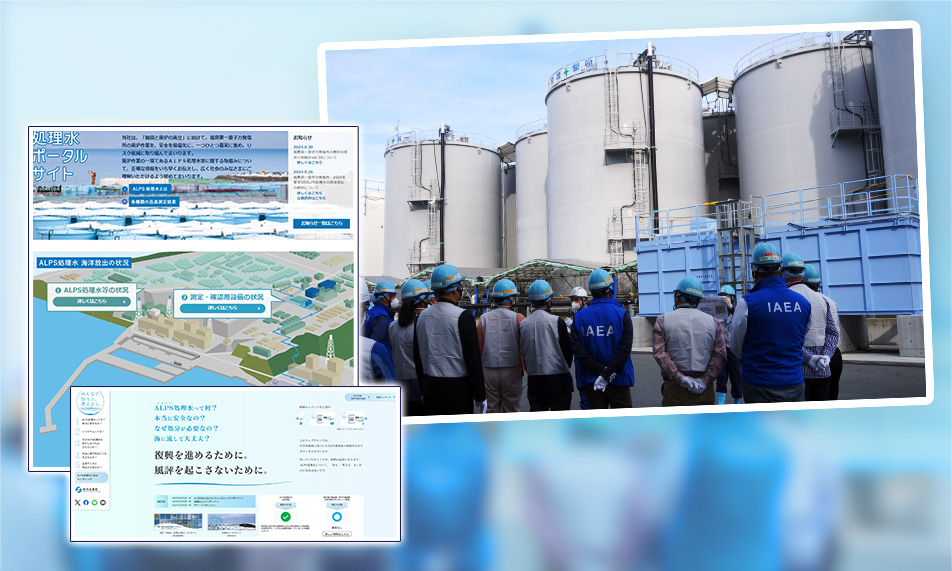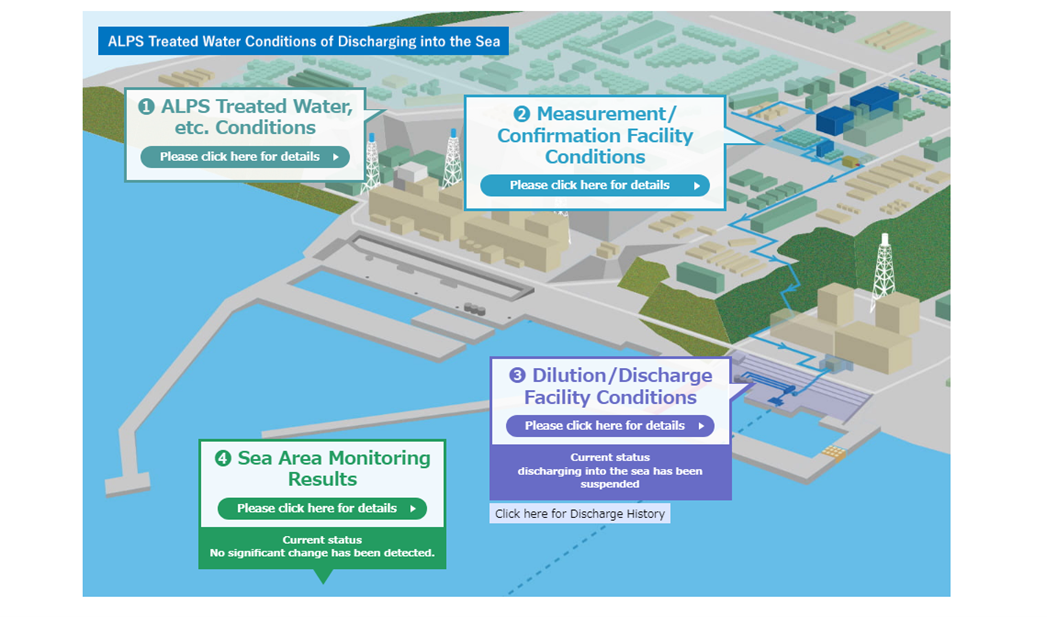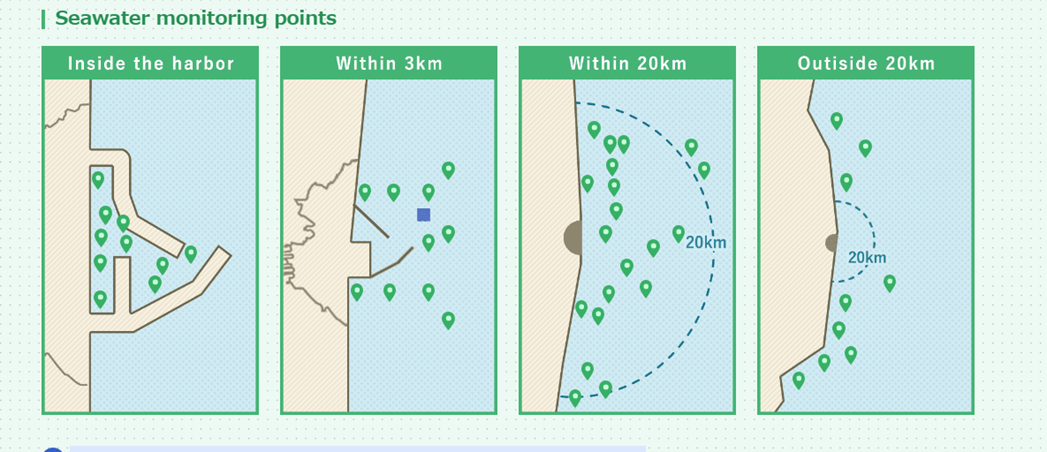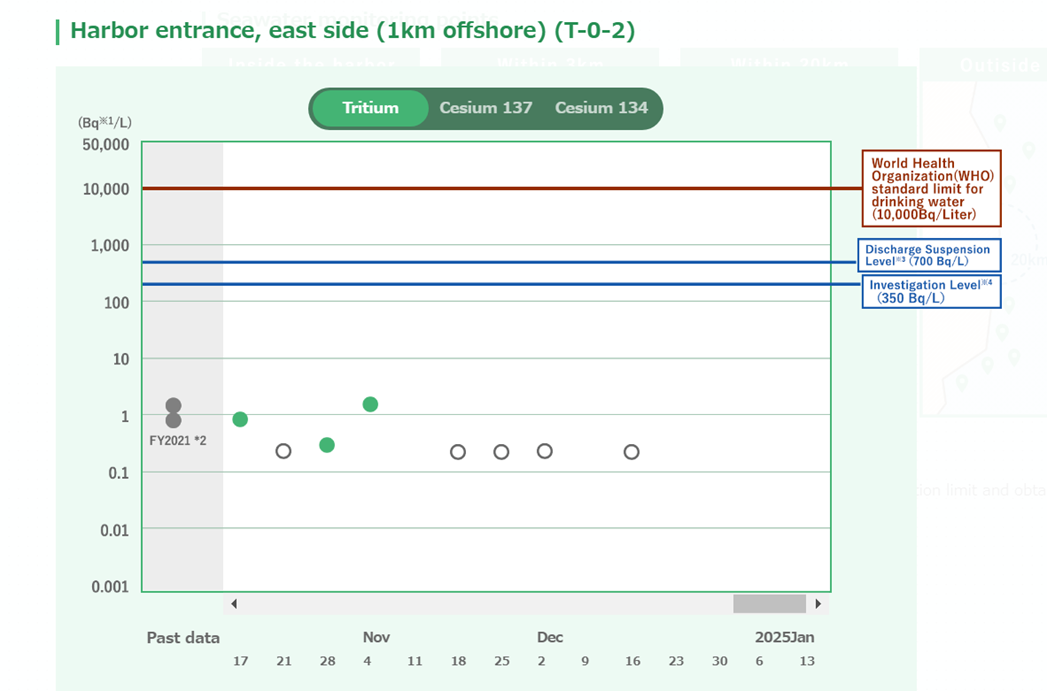One Year After the Start of ALPS Treated Water Discharge: How Are Safety and Monitoring Being Ensured?
(Provisional translation)
(English ver.) 2025-02-07

After the accident that occurred at Tokyo Electric Power Company (TEPCO)’s Fukushima Daiichi Nuclear Power Station (FDNPS) caused by the Great East Japan Earthquake, efforts have been accelerated toward the reconstruction of Fukushima and decommissioning of the FDNPS. The discharge of ALPS treated water into the sea started in August 2023. As over one year has passed since then, this article explains how the safety review and monitoring of ALPS treated water have been conducted and provides links so that you can see the up-to-date monitoring results in the surrounding sea areas.
Monitoring results have confirmed the safety of the discharge
ALPS treated water is water that has been purified and treated until it satisfies safety standards for all radioactive materials other than tritium. For tritium, the water is significantly diluted with seawater before discharge so that it fully satisfies safety standards.
Because the water satisfies safety standards before it is discharged, there is no concern about effects on human health or the environment. The International Atomic Energy Agency (IAEA) concluded in its Comprehensive Report that the approach to discharge ALPS treated water into the sea is consistent with relevant international safety standards and the discharge will have a negligible radiological impact to people and the environment.

IAEA Director General Grossi delivers the Comprehensive Report to Prime Minister Kishida
(Source) Prime Minister’s Office website
The IAEA’s review will be conducted over many years, before, during and after the discharge. Since the discharge started in August 2023, the IAEA has conducted two review missions on the safety of the discharge of ALPS treated water and has announced the results. The IAEA’s review has been conducted by the IAEA Task Force, which consists of IAEA officials and international experts.
The IAEA Task Force discussed technical details with the Japanese Government and TEPCO. The Task Force also visited the FDNPS to confirm the status of the discharge facilities. It compiled reports in January and July 2024 based on these review missions.
Both reports highlight that the Task Force did not identify anything that is inconsistent with the requirements in the relevant international safety standards, reaffirming the safety of the discharge into the sea. The IAEA also maintains its continuous presence at the IAEA Fukushima Daiichi NPS Office to conduct its on-site independent sampling and analysis activities.

A scene of the IAEA Task Force’s confirmation of the status of the dilution/discharge facilities in October 2023
(Source) Tokyo Electric Power Company Holdings, Inc.
Furthermore, sea area monitoring is conducted continuously. Eight Discharges into the sea have been conducted as of August 2024. Monitoring results so far have confirmed that the tritium concentration is far below the operational limit and has no impact on human health or the environment.
Check the sea area monitoring results anytime!
Monitoring results are readily available on the website for your immediate reference.


Click each seawater monitoring point for specific figures at that point (example).

The uppermost red line indicates the World Health Organization (WHO) safety standard for drinking water for tritium. Green dots in the lower part indicate that the detected figures are below this standard, whereas white dots represent ND (Not Detected), meaning that concentrations are below the lower limit of detection.
Furthermore, TEPCO has established a website called the Overarching Radiation-monitoring data Browsing System in the coastal ocean of Japan (ORBS) with a map showing sea area monitoring data published by Fukushima Prefecture, the Ministry of the Environment, the Fisheries Agency, and the Nuclear Regulation Authority.
- For more details, please visit the site below:
- Overarching Radiation-monitoring data Browsing System around Japan|Tokyo Electric Power Company Holdings, Inc.
METI has also opened a special website titled “Let’s get to know and understand about ALPS treated water.” The webpage titled the “Monitoring of the ALPS treated water” shows monitoring results at a glance.
- For more details, please visit the site below:
- Monitoring of the ALPS treated water
- For more details, please visit the site below:
- Let's get to know and understand about ALPS treated water.
Efforts are being accelerated to ensure the safety of the discharge of ALPS treated water into the sea with extensive information made available to the public. If you are interested in knowing the current conditions of the sea areas surrounding the Fukushima Daiichi Nuclear Power Station, feel free to visit the relevant websites shown above.
Divisions in Charge
About this article
Nuclear Accident Response Office, Electricity and Gas Industry Department, ANRE
About the Special Contents
Research and Public Relations Office, Commissioner’s Secretariat, ANRE
![]() The original Japanese text of this article; Click here
The original Japanese text of this article; Click here